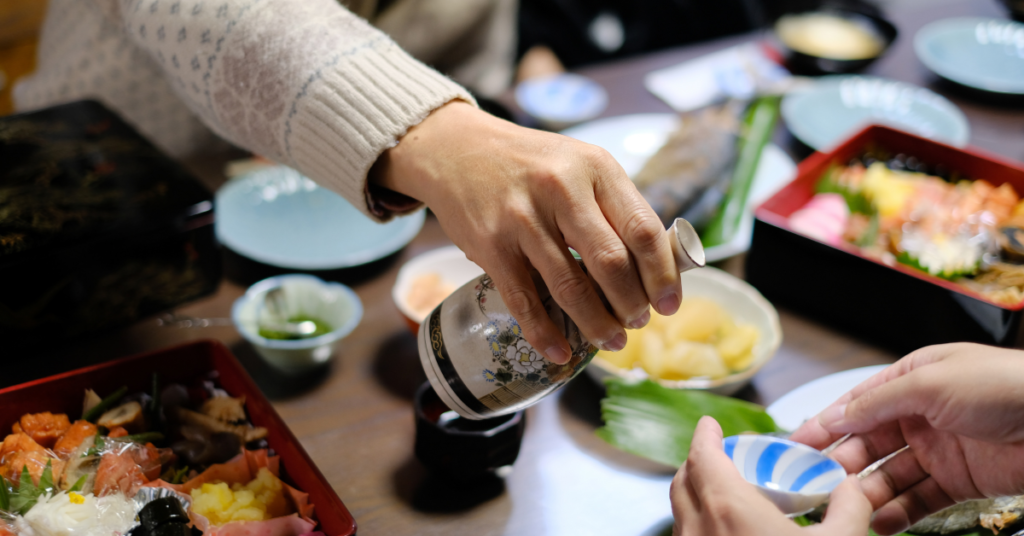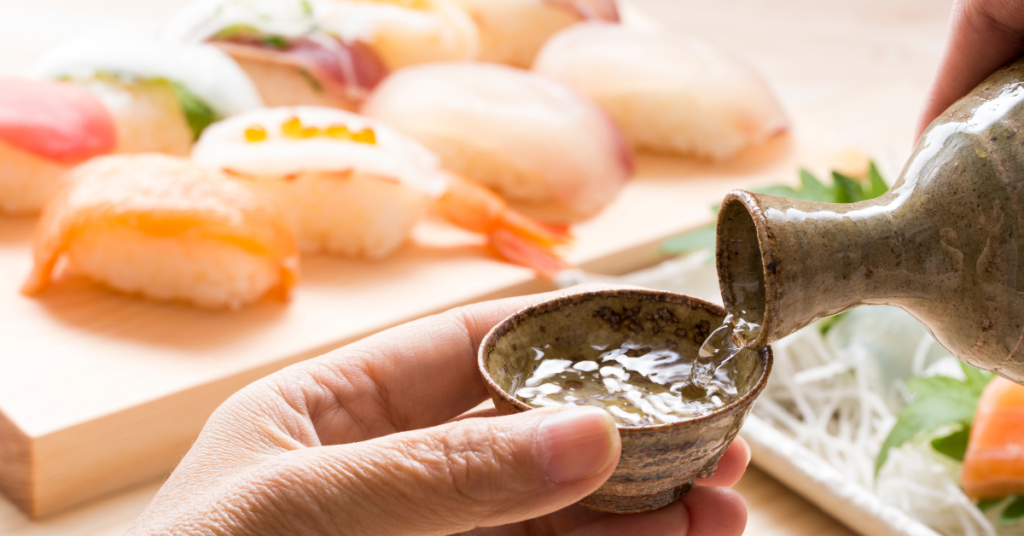With Japanese cuisine finding a large fan base in India since the late 90’s, it’s no wonder that the traditional Japanese fermented rice wine followed suit.
Sake, pronounced Sa-kei or Sa-ki. (no, it’s not what the young bollywood starlet means while dancing to the catchy tunes of O Saki Saki… Though interestingly enough, the word in urdu does mean ‘one who serves you wine’!)
Despite being described as Japanese rice wine, Sake is produced by a brewing process more similar to that of beer. Simply put, starch is converted into sugars that ferment into alcohol. To produce actual wine, alcohol is produced by fermenting sugar that is naturally present in fruit like grapes.
Will Sake make you ss..slurr?
Sake is often mistakenly thought of as a strong liquor sometimes considered in the same league as harder liquors like vodka or whiskey.
This can be in large part due to its portrayal in the media or Hollywood movie scenes where an American tourist in Japan gets drunk after just one or two rounds of Sake!
The small cups in which Sake is served may have also been associated with shot glasses used for potent drinks like tequila.
Traditionally Sake does have a higher alcohol content than beer, but usually only two or three percentage points higher than wine. So maybe too many small cups of it can certainly ensure a hangover!

The story of Sake.
In the quiet heartland of Japan, a centuries-old art is still practiced with devotion, echoing the essence of a nation’s culture and spirit. It’s a craft that transcends generations, connecting the past with the present, and nurturing the future.
It begins with the careful selection of rice grains, a process as meticulous as it is essential. Japanese sake producers, known as toji, uphold traditions that have endured for centuries. The brewing process, known as “sakamai” involves washing, steaming, and fermenting the rice. This intricate dance of precision and patience transforms humble rice grains into the exquisite beverage.

The Revered Role of Rice
Rice is the soul of Sake. Diverse rice strains, each with its distinct character, play a pivotal role in crafting sake’s flavor and aroma ( ginjo-ka). Whether it’s the full-bodied Yamada Nishiki or the light and fragrant Gohyakumangoku, the choice of rice defines the personality of the final brew.

Sake is a staple of Japanese Culture
Sake isn’t just a drink in Japan; it’s a cultural icon. From Shinto rituals to traditional ceremonies and festivals, Sake is an integral part of Japanese life. It’s a bridge between generations, connecting past and present. The reverence given to Sake reflects the respect for tradition and the importance of harmony in Japanese culture.
Sake finds a strong footing in India
Sake was initially served only at premium restaurants or five star hotels. Today, with Japanese restaurants found in almost every metro city, Sake has found takers among Indians who have discovered a taste for this vegan, sulphite-free beverage that can be served at different temperatures.
Know your Sake from your Sushi or is it just all Greek and Japanese to you?!
A Japanese rice spirit, Sake is made from four key ingredients: rice, water, koji (rice mould) and yeast.
But deciphering Sake labels can be like unraveling a mystery. Terms like junmai, ginjo, daiginjo, and tokubetsu can be bewildering for the uninitiated. Understanding the language of Sake labels is essential for finding the perfect bottle to match your preferences.
The Sake Club India (SCI) was launched in 2020 and hosts events that appreciate Japanese cuisine and culture with Sake taking centre stage. At Vinexpo 2022 held in New Delhi, SCI had presented 19 Sakes from six breweries across five prefectures of Japan, including yogurt-based and sparkling Sakes which proved to very popular.
The aroma, texture, and flavor of Sake offer a sensory journey like no other. From the fragrant ginjo with its hints of melon and pear to the umami-rich junmai, exploring the world of Sake is a tantalizing adventure for the palate.

SAKE has come a long way from home.
Travelling far beyond its shores, Sake is finding a place at international tables, accompanying cuisines from diverse corners of the world. The fusion of Sake with global flavors is a testament to its versatility and universal appeal.
Remember the next time you raise a glass of Sake, you are toasting not just a drink but a timeless legacy.
Kanpai!





